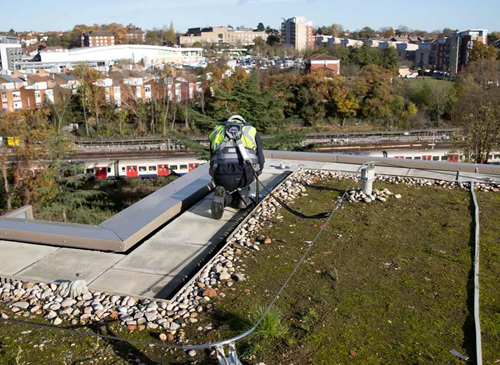 Saturday, September 21, 2024
Saturday, September 21, 2024  Saturday, September 21, 2024
Saturday, September 21, 2024 
When it comes to a facility’s fall protection, workers who access the roof for inspections, maintenance, repairs, and other tasks are often in the spotlight. Although a slip and fall resulting in an injury can occur almost anywhere in a building, a fall from an unprotected roof edge would be devastating.
An engineered horizontal lifeline system is a regulatory-compliant way to provide both fall restraint and fall arrest for rooftop workers and others who need to move along an elevated surface. An anchorage system that complies with national, provincial, and local safety standards is critical to any lifeline assembly.
The modular design of a horizontal lifeline system allows it to adapt to different worksite requirements and integrate seamlessly with existing structures. It provides continuous protection for workers, allowing them to remain securely attached while performing their tasks. Horizontal lifelines feature galvanized and stainless steel components for strength, durability, and corrosion resistance. A span of nearly 12 metres (39 feet) between anchor posts can support up to three workers.
Keep reading this article on keesafety.ca
Check out more news, articles and blogs here